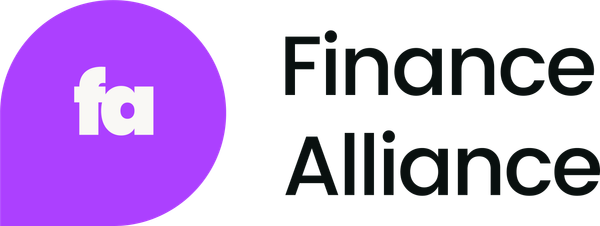Believe it or not, a crisis management plan is not the same as a business continuity plan. The two are similar in many ways, sure, but they have key differences that set them apart.
When disaster strikes and steers the business off course, it can lead to chaos, and in extreme cases, send the business into bankruptcy. For finance teams, this means safeguarding liquidity, managing cash flow, and ensuring the business can weather the storm.
The good news is that you can help the business avoid such a catastrophic fate by creating and implementing both a business continuity plan and a robust crisis management plan. And, even better, you can build them in such a way that they work effectively together to help prepare the business and guide it through any crisis.
So, if you want to know the main differences between a crisis management plan vs business continuity plan, keep reading!
In this article, we cover:
- What is a crisis?
- What is a crisis management plan?
- What is a business continuity plan?
- Crisis management plan vs business continuity plan: key differences
- Top tips to create a crisis management business continuity plans
What is a crisis?
Before we can compare the differences between a crisis management plan vs a business continuity plan, let’s define what we mean by ‘crisis.’
A crisis in the context of business is an event that disrupts the business’s facilities such as data, personnel, IT systems, etc. This can then cause production to cease, which stops the business from running as it should.
The impact of a major crisis on a business can have a knock-on effect and negatively impact areas including production schedules, the business's reputation, customer advocacy, revenue, and so on.
Here are some examples of potential crises that could impact a business:
- Accidental disasters (power cuts, fires, gas leaks, etc.)
- Natural disasters (storms, hurricanes, floods, etc.)
- Technological disasters (corrupt software, faulty hardware, harmful cyber-attacks, etc.)
- Vandalism or theft
- Fuel shortages
- Loss of a staff member or a staff member being ill and unable to work
- Disease or widespread infection (COVID-19 is a prime example of this)
- Terrorist attack (local or abroad)
- Human error
- War
- Privacy policy issues
- Supply chain issues
- An industry strike
- Data protection issues
- Collapse of infrastructure
- Abandonment in leadership
The reality is, businesses face a wide range of potential threats, both predictable and unforeseen. Recognizing the variety of these potential disruptions underscores the critical need for proactive planning.
Without proper crisis management and business continuity strategies in place, companies are left vulnerable to significant, and potentially irreversible, damage.

What is a crisis management plan?
A crisis management plan (CMP) is a response plan to a crisis that would negatively impact the business’s ability to operate or damage its reputation or profitability.
Businesses must be prepared to face different crises appropriately and crisis management plans act as guides to help navigate critical situations and avoid further catastrophes. The plan should include a set of steps to help the business handle the crisis.
So, just how important is a crisis management plan?
Well, according to the Federal Emergency Management Agency (FEMA), 40% of businesses never reopen following a disaster. One of the main reasons why is that those businesses probably didn’t use crisis management plans to deal with unexpected events.
To give your business the best possible chance of survival, you need a well-thought-out crisis management plan with specific steps to handle such an event.
What is a business continuity plan?
A business continuity plan (BCP) outlines how a business will continue to operate should an unplanned occurrence take place. It’s a comprehensive document that acts as a prevention and recovery system for potential threats or disruptions such as cyber-attacks or natural disasters.
The best BCPs are those that have been tested numerous times to make sure there are no gaps or weaknesses. And, if some weaknesses are identified during the testing process, those must be corrected. This is to ensure personnel and assets are fully protected in the event of a crisis.
The main goal of a BCP is to provide the business with thorough strategies and information required to maintain operations throughout and following a disaster.

Crisis management plan vs business continuity plan: Key differences
Whilst crisis management plans and business continuity plans share similarities, some key differences set them apart.
Here’s a breakdown of some of the most important variances between the two:
Purpose of a crisis management plan vs business continuity plan
The number one difference that sets both plans apart is their overall purpose within the business.
Crisis management plan – a detailed plan that outlines the specific steps the business must take during a crisis.
Business continuity plan – a prevention and recovery system for potential cyber-attacks or disasters such as hurricanes, floods, etc.
Benefits of a crisis management plan vs business continuity plan
Now that we understand the core differences between crisis management and business continuity plans, let's explore the specific benefits each brings to the table. Implementing these plans isn't just a theoretical exercise; it translates into tangible advantages for your company.
Crisis management plan benefits:
- Provides a clear series of steps to approach emergencies with confidence.
- Safeguards the business’s reputation and industry standing.
- Reduces the impact of a crisis at the workplace.
- Improves the well-being of your employees.
- Protects the business from legal exposure.
- Provides sufficient communication during a crisis.
Business continuity plan benefits:
- Safeguards the business’s ability to ensure operations can continue to run during a disruption.
- Recovers operations efficiently following disruptions.
- Reduces costs and the duration of the impact of a disruption on the business.
- Mitigates risks and upholds the business’s reputation.
- Helps you comply with legal requirements.
- Potentially saves lives during a major crisis.

Characteristics of a crisis management plan vs business continuity plan
Here are a few key characteristics of a crisis management plan to be aware of:
- The plan must be made in the presence of all executives. And, everyone in the crisis management team should have a say in the plan and its steps.
- It should identify problem areas and suggest solutions to help the business come out of a crisis as quickly as possible.
- The plan should focus on saving the business’s reputation and overall standing.
A finalized CMP should include:
- An outline of the purpose and goals of the plan.
- A potential evacuation plan should the need arise.
- A crisis response strategy.
- Important contact information such as staff members, vendors, and law enforcement.
- Media management.
- Integration with other emergency plans the business has created.
And here are some important characteristics of an effective business continuity plan:
- High availability to ensure the business has access to essential applications in the event of a local failure, such as issues with the software.
- The BCP should focus on how the business can remain in operation during a disruption.
- It also needs to include a disaster recovery plan should the primary site be inoperable or destroyed.
A business continuity plan must include:
- An analysis of critical functions within the business.
- A list of potential risks in order of priority (for example, through risk tolerances and risk appetite).
- Strategies and/or mitigation activities to protect vital components identified in the early stages of the BCP.
- Evidence that the BCP strategies have been properly tested.

Top tips to create a crisis management plan that you can trust
This plan is all about being prepared for the immediate chaos of a disruptive event. It's your playbook for the first crucial hours and days. So, here are some tips to help you create a crisis management plan that you can trust to get you through the hard times:
- Identify potential crises. Brainstorm every possible disaster, from cyberattacks to natural disasters (like we talked about before). Don't hold back!
- Establish a crisis team. Who's in charge? Who handles communication? Who talks to the media? Define roles clearly so everyone knows what to do should a crisis happen.
- Develop communication protocols. How will you communicate internally and externally? It's important to develop pre-written statements ready for common scenarios.
- Create actionable checklists. Step-by-step instructions for each type of crisis will help keep everything in motion when disaster strikes. Keep it simple and easy to follow.
- Practice makes perfect. Run simulations and drills. It's like a fire drill, but for your business.
Tips to create a business continuity plan
This plan is about keeping the lights on and ensuring your business can continue operating, even if in a limited capacity.
- Business impact analysis. Don't just ask "what's essential?" Map out the entire flow of key processes. Identify dependencies between departments, systems, and data.
- Recovery strategies. How will you recover critical systems and data? Do you have backups? Can you work remotely? Develop detailed procedures for restoring systems and data and make sure you have alternative communication methods if your primary systems are down.
- Alternative workspaces. Do you have a backup location if your office is unusable? Identify specific locations, whether they're remote work setups, co-working spaces, or pre-arranged backup offices.
- Supplier and vendor contingencies. What happens if your key suppliers are disrupted? Have backup suppliers ready.
- Regular testing and updates. Business continuity plans are living documents. Review and update them regularly.




 Follow us on LinkedIn
Follow us on LinkedIn







